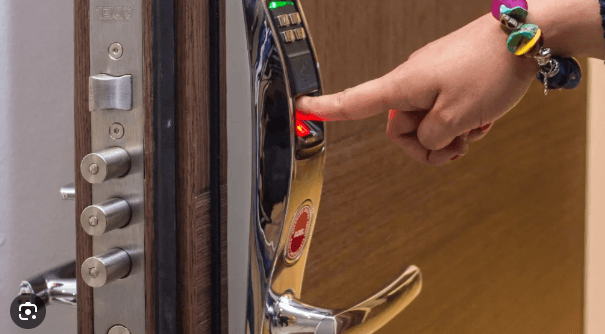Radio-frequency identification (RFID) technology has become increasingly popular in recent years, particularly in the realm of access control. RFID access control systems offer numerous advantages over traditional access control methods, such as keys or swipe cards. However, understanding the technology and how it works can be a challenge for many people. In this article, we’ll break down the basics of RFID access control and explain what you need to know.
Radio-frequency waves are used by RFID access control systems to convey data between a reader and a tag or card. The tag or card contains an RFID chip, which is programmed with a unique identifier. When the tag or card is brought into close proximity to the reader, the reader sends out a radio signal, which is received by the chip in the tag or card. The chip then sends the unique identifier back to the reader, which verifies whether or not the tag or card has access to the area or resource being protected.
One of the primary benefits of RFID access control systems is that they are much more secure than traditional access control methods. Keys and swipe cards can be easily lost, stolen or duplicated, but RFID tags or cards are much more difficult to copy. In addition, RFID access control systems can be programmed to only allow access to specific areas or resources, further increasing security.
Another advantage of RFID access control systems is their convenience. Unlike traditional access control methods, RFID tags or cards can be easily carried in a pocket or attached to a keychain. This makes it much easier for individuals to gain access to the areas or resources they need, without having to fumble with keys or swipe cards.
RFID access control systems can also be integrated with other security technologies, such as surveillance cameras or alarms, to create a comprehensive security system. For example, if an unauthorized person attempts to gain access to a protected area, the RFID system can trigger an alarm or alert security personnel.
However, as with any technology, there are also potential drawbacks to RFID access control systems. One concern is that the technology is vulnerable to hacking or data theft. Hackers could potentially intercept the radio signals being transmitted between the reader and the tag or card, allowing them to gain access to the protected area or resource. In addition, if the RFID system is not properly secured, hackers could potentially access the system’s database, which could contain sensitive information about individuals or resources being protected.
Another potential drawback of RFID access control systems is the cost. While RFID tags or cards are relatively inexpensive, the readers and software required to operate the system can be quite costly. In addition, if the system is being installed in an existing building, there may be additional costs associated with retrofitting the building to accommodate the new system.
Despite these potential drawbacks, RFID access control systems remain a popular and effective method of securing access to areas or resources. As technology continues to evolve, we can expect to see even more innovative uses of RFID in the realm of access control.
In conclusion, RFID access control systems offer numerous advantages over traditional access control methods, such as increased security and convenience. However, there are also potential drawbacks to consider, such as vulnerability to hacking and the cost of installation. By understanding the basics of RFID access control and weighing the pros and cons, you can make an informed decision about whether or not it is the right choice for your security needs.





